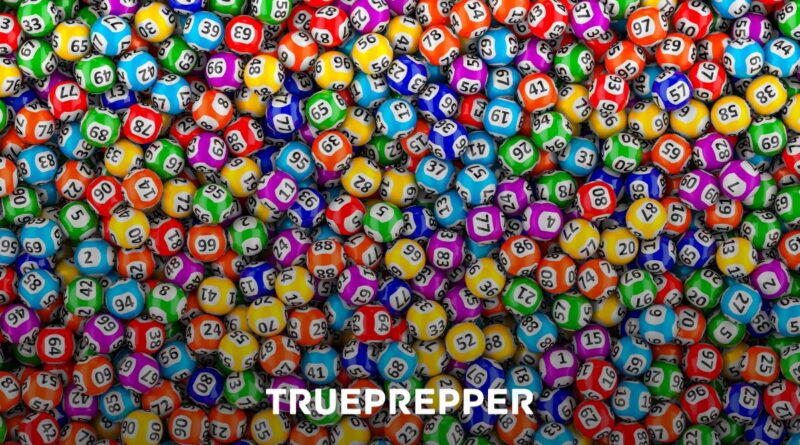[UPDATE] How the Next Pandemic Will Be Like the Powerball
We’re revisiting an old article we wrote on April 3, 2018 titled How the Next Pandemic Will Be Like the Powerball. Two short years later we encountered the ‘next pandemic’. We added a section at the end comparing our warning about the risks of a pandemic versus what we lived through.
Pandemics and the most well-known lottery (the Powerball) actually have quite a lot in common. The outcomes are very different, of course. The Powerball makes a lucky group or individual very rich while a pandemic wipes out a chunk of the world’s population. The math and models associated with the two are similar though. We will talk about the predictive model math, including probabilities and impact in this article and look at how the results can affect us.
Contents (Jump to a Section)
Jackpot Winner
The probability of hitting the jackpot with the Powerball is currently 1 in 292,201,338. Pretty small odds! On January 13, 2016, the jackpot was a whopping $1.6 billion. The jackpot climbs high very quickly once it reaches a large amount because it draws in more players and more repeat ticket sales from the same players. Once the jackpot passes a $584 million pot, the expected value given the odds times the ticket cost actually passes the ticket value, if there is only a single winner.
Passing this psychological barrier causes lottery players to dig deeper and play with more money and lures more casual players to play as well. The result is very similar to an outbreak researched by epidemiology (the study of disease outbreaks). All of these players and extra tickets increase the probability that the game will ‘hit’ and payout at least one jackpot winner. All of these players and extra tickets also increase the impact of the game by drastically increasing the jackpot value at a fervent rate.
Epidemiology and the Calculation of Risk
We have put it out there many times: The risk calculation is simply probability multiplied by impact. The Powerball is strictly regulated and reported- so we know the exact probability (the listed odds) and the approximate impact (the listed pot). Pandemics are a little harder to get a grasp on.
Scientists pull from historical data to learn about epidemics and pandemics. They also perform tests with diseases in lab simulations to understand both the probability of occurrence on a timeline and the impact. Even with simulations, experts agree that the next pandemic will catch the world by surprise.
You can learn more and even do your own assessments with our risk analysis guide.

Rising Risk for Pandemics
Experts point to the fact that world security against disease outbreaks is only as strong as the weakest countries. Poor and underserved countries offer a potential outbreak a breeding ground to manifest quickly, without rapid reporting or treatment available. Both the probability and the impact of a pandemic outbreak are growing due to seven main reasons:
- The World Population is Growing
- People are Inhabiting New Environments
- Flora and Fauna Displacement
- More People are Traveling the Globe More Frequently
- Civil Conflict is Affecting More People
- The Doctor to Person Ratio is Dropping in Outbreak Regions
- Information (And Panic) is Spread Quickly
The Experts Weigh In
Peter Sands, the chair of the Commission on a Global Health Risk Framework for the Future says, “Pandemics represent a real threat to human security.” He details in a recent report that new diseases will emerge and spread much faster in the 21st century than they did in the 19th.
Larry Brilliant, a renowned epidemiologist, reported that 90% of surveyed epidemiologists believed a pandemic would occur within their children’s or grandchildren’s lifetimes of at least this magnitude:
- 1 billion sick
- 165 million dead
- Contribute to global recession/depression
- $1-3 trillion economic cost
The Spanish Flu of 1918
We use this example often to show how quietly devastating a pandemic was only a century ago. It was not covered extensively in history class (as far as I can remember), which is a pity given how it affected the entire world. Here are the quick facts:
- Killed 3-6% of the world’s total population
- One of the first H1N1 pandemics
- Over 500 million were infected worldwide (30%+ of the population, 28% in the US)
- Unusually aggressive viral strain
- Effects of the pandemic were censored in the US, UK, France, and Germany
- The source or ‘patient zero’ likely originated in China
The Powerball Pandemic Link
The Powerball has linked probability and impact in a very similar way to a pandemic. A rising population and the other six risk elevators listed above give pandemics more potential fuel in the same way more players in the Powerball raise the jackpot. Global society has the ability to reduce some of these risk elevators, but the chances of this happening are not likely prior to an outbreak.
Unfortunately, history shows that it takes an actual occurrence to get the attention needed. When this occurrence happens, there will not be a lucky winner with a windfall of jackpot money. Instead, there will be a world caught off guard and unprepared.
[UPDATE] Coronavirus Review
Now that COVID-19 is endemic, we feel that it is an appropriate time to review this comparison we published in 2018. For starters, we’ll stress that just because a pandemic happened, it doesn’t mean another one is now less likely. While more resources and visibility are here for pandemics, the recent one did show us how difficult they are to contain and mitigate in the modern world.
To start, a pandemic certainly was imminent when we wrote this in 2018. We’ll skip the ‘I told you so’ because we were warning about the risk- not forecasting, which is very different. You can discount any prepper forecasting specific dates or ‘prophesizing’ events because they are full of it and just trying to sell you something.
Next, let’s check in with Larry Brilliant’s numbers:
- 1 billion sick – 770 million confirmed cases (Nov 2023). Didn’t quite hit the billion mark, but unreported cases probably tally up to over 1 billion sick.
- 165 million dead – 7 million dead (Nov 2023). Nowhere close on this one, thankfully. But- this goes to show a pandemic could be much, much worse next time.
- Contribute to global recession/depression – A worldwide economic recession occurred from 2020-2022, mostly as a result of localized lockdowns.
- $1-3 trillion economic cost – The economic cost to the US GDP alone over the past three years is estimated to be at least $14 trillion. Brilliant’s estimates were much lower than the actual economic impact.
Again, unlike Powerball, whose impact (payout) is reset when a jackpot is claimed- the impact and probability of the next global pandemic will continue to rise. Prepare accordingly.
The Final Word
A pandemic should be on your prepping radar if it is not already. Experts agree and history shows that it is not a matter of ‘IF’ with pandemics, but a matter of ‘WHEN’. Knowing what to do and how to protect yourself and your family can give you a leg up ‘when’ any disease outbreak occurs. Communication technology and protective gear have been improving over the years as the pandemic risk grows. Staying up to date makes sense and does not require many resources.
Here are some other guides our subscribers have found helpful:
- Best Gas Mask for Tear Gas, Viruses, and Nuclear Fallout
- When Does a Flu Become a Pandemic?
- Prepper Risk Assessment | Threat List and Priorities
Keep exploring, stay prepared, and be safe.
You’ve Been Missing Out
Join the 2+ million preppers that rely on our prepping advice by subscribing to TruePrepper.- Practical guides and tips
- Useful survival giveaways
- Free, forever
- < 0.4% of people unsubscribe


